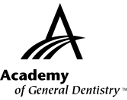|
Exercise No. 387
Subject Code: 781
Tooth Whitening/Bleaching
The 15 questions for this exercise are based on the article, Effects of green tea on the shear bond strength of orthodontic brackets after in-office vital bleaching, on pages 72-75. This exercise was developed by Charles Martello, DDS, MAGD, in association with the General Dentistry Self-Instruction committee.
|
Reading the article and successfully completing the exercise will enable you to:
- recognize the effects of hydrogen peroxide (HP) bleaching;
- identify the method an antioxidant employs to neutralize HP; and
- understand the clinical benefits of green tea (GT) as an antioxidant.
|

